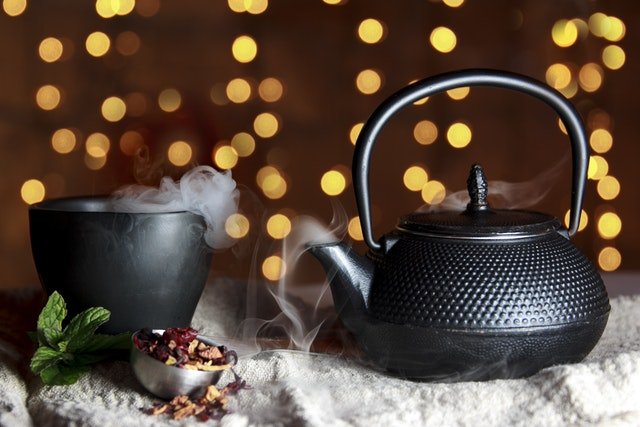
Japan is a country famous for its infusions, mainly green tea, but did you know that it also produces black tea? Japanese black tea is less famous than the Indian and Chinese varieties; however, it is just as tasty and comforting.
The country of the rising sun is a great producer of tea. While most of their tea leaf production goes into green tea, a small portion is used to create a distinctively tinged black tea that is well worth trying.
The history of tea in Japan
Legend has it that tea came to Japan in the 8th century AD from Buddhist monks who had previously studied in China. Thus, throughout their pilgrimage, they began to make tea and its health benefits known.
Let us remember that tea has been used since time immemorial to treat all kinds of health conditions such as indigestion, nausea, muscle pain, constipation and diarrhea, and even to improve the immune response.
Over the years, tea consumption spread throughout the island and, from the government, the plantation of the tea plant, Camellia sinensis, was promoted to produce, mainly, green tea.
Thus, the Japanese ended up adopting tea as part not only of their daily lives but also as part of their culture. Tea then became much more than a drink to prevent or cure illnesses: it became a way of sharing, welcoming and showing respect towards others.
Now, when did black tea start to be produced in Japan? History indicates that only about 150 years ago. During the Meiji dynasty, Japan opened its borders and joined international trade. Thus, the need was born to market a product that would remain in good condition for long periods of time. Do you know what we mean? Yes, to black tea.
Tada Motokichi was the government envoy to study tea production techniques in China and India. After years of observation, he returned to Japanese lands with the necessary knowledge acquired in Assam and Darjeeling, and with seeds, to start plantations in the country.
This tea scholar planted many of these seeds in Mariko, now Shizuoka, where tea plants of the Assam variety, characteristic of India, can still be found today.
Japan began, little by little, to produce black tea for export to the West, mainly to countries like the United States. However, his first attempts were frustrated since his productions did not reach the same quality as those of other countries.
It is worth noting that every time Indian production was affected for some reason, Japanese exports experienced notable growth. After World War II, the Japanese government once again opted for black tea, considering that it would be easier to sell internationally due to its greater durability and Western taste.
After a significant drop in the export of Japanese black tea in the 1990s, the idea of exporting this variety again becomes clear in the face of falling sales of green tea.
Again, the government encourages production again and, little by little, the quality begins to improve. To begin with, tea producers are beginning to dedicate separate plantations for this variety and competitions appear that exacerbate interest in improvements in flavor, aroma and color. Today, Japan is a small world exporter of tea.
The tea areas in Japan
The tea plant is planted and harvested throughout the entire territory; therefore, when talking about the production regions, almost all the regions of Japan are mentioned:
- Mount Fuji near Tokyo.
- Shizuoka, Kyushu and Kagoshima, green tea production areas of the Sencha and Bancha varieties.
- Okabe, home of Gyokuro’s creation.
- Uji, Gyokuro, Sencha and Matcha processing area.
And then where is black tea produced? The truth is that the harvest is so unrepresentative that a production region is not specifically differentiated, but more and more producers are choosing to prepare and offer black tea to the market, as for example on Yakushima Island.
Japanese black tea production
Once harvested, Camellia sinensis leaves undergo a natural oxidation process in which they are left to wither for around 17-18 hours.
After this process, the sheets are rolled at room temperature with a laminating machine. This machinery slightly breaks the leaves, as well as giving them the classic rolled appearance of tea leaves.
Finally, after rolling, drying begins, which will allow the leaves to be preserved for a long time. Without the drying process, it would be impossible for the leaves to retain their benefits, aroma, flavor and color.
The taste of Japanese black tea

Japanese black tea is called Wakoucha, Koucha or Kocha. Actually, all these denominations would mean something like “red tea”. That is to say that what for us is black tea, in Japan it would be called red tea.
In general, Japanese black tea shows low astringency and pairs very well with sweets. Japanese black tea is really sweet and pleasant to the palate and nose. It is a noble and light infusion.
To prepare it correctly, you must infuse 2 grams of black tea for each cup of water and let it steep for 2 to 3 minutes. The best? Sheets can be reused up to 3 times.
If you haven’t tried Japanese black tea yet, we invite you to do so. You will be surprised by its difference in color, body, aroma and flavor compared to the black teas that we are more used to drinking. Dare to discover it!
